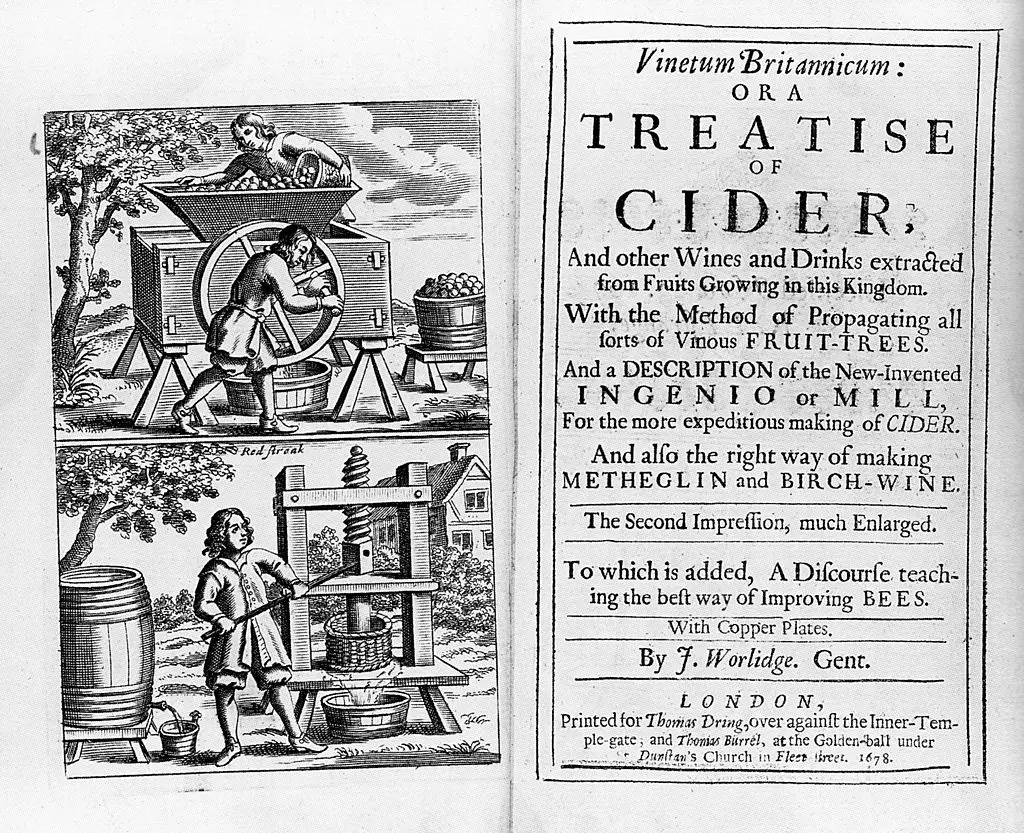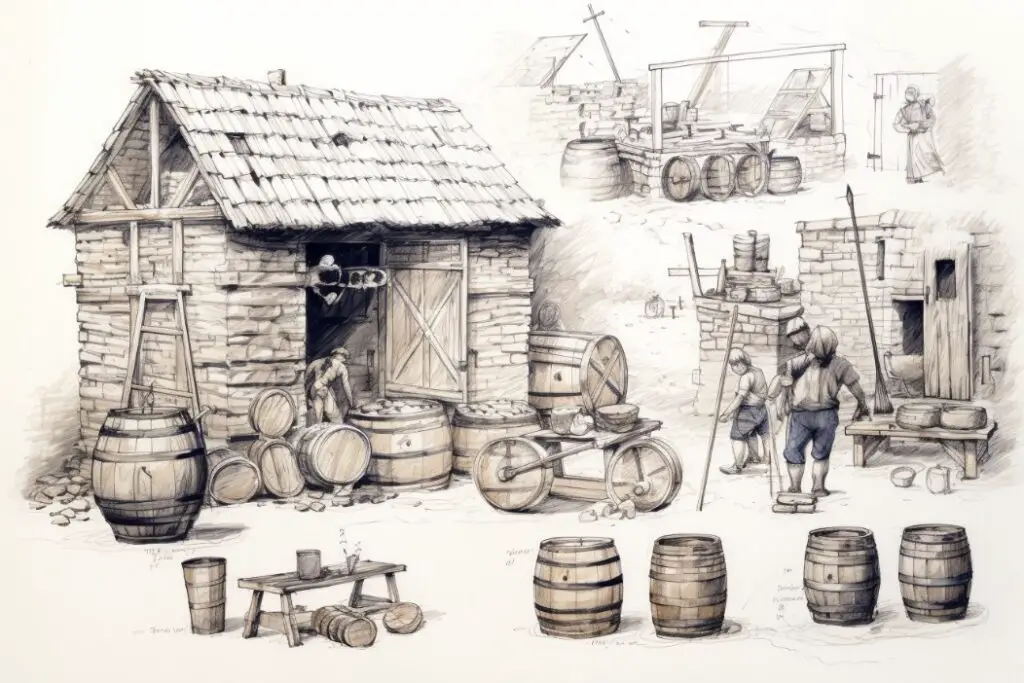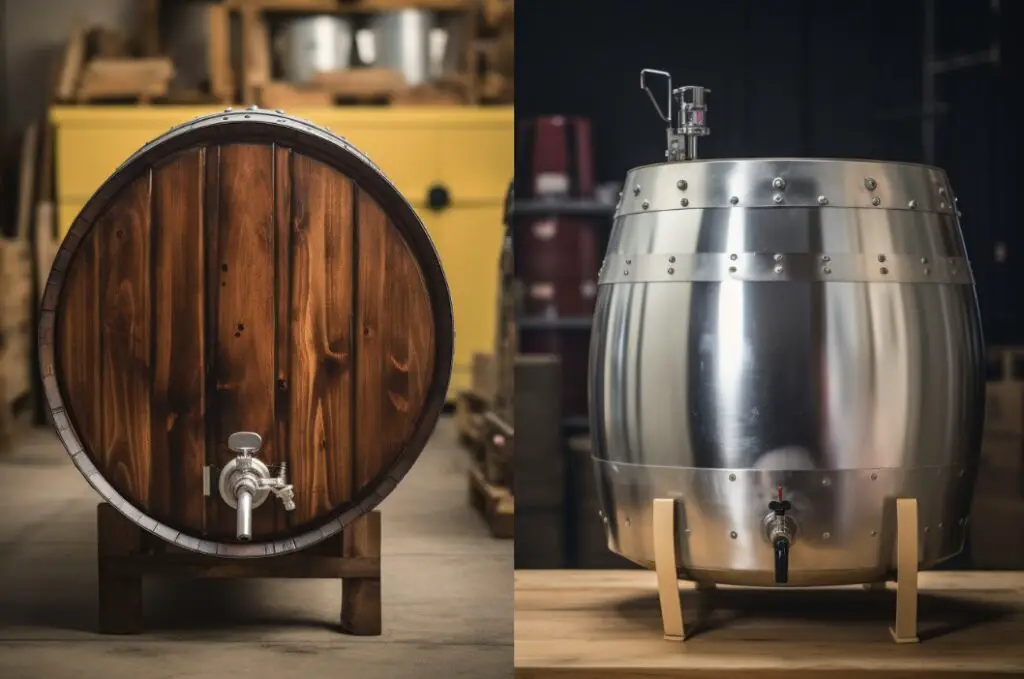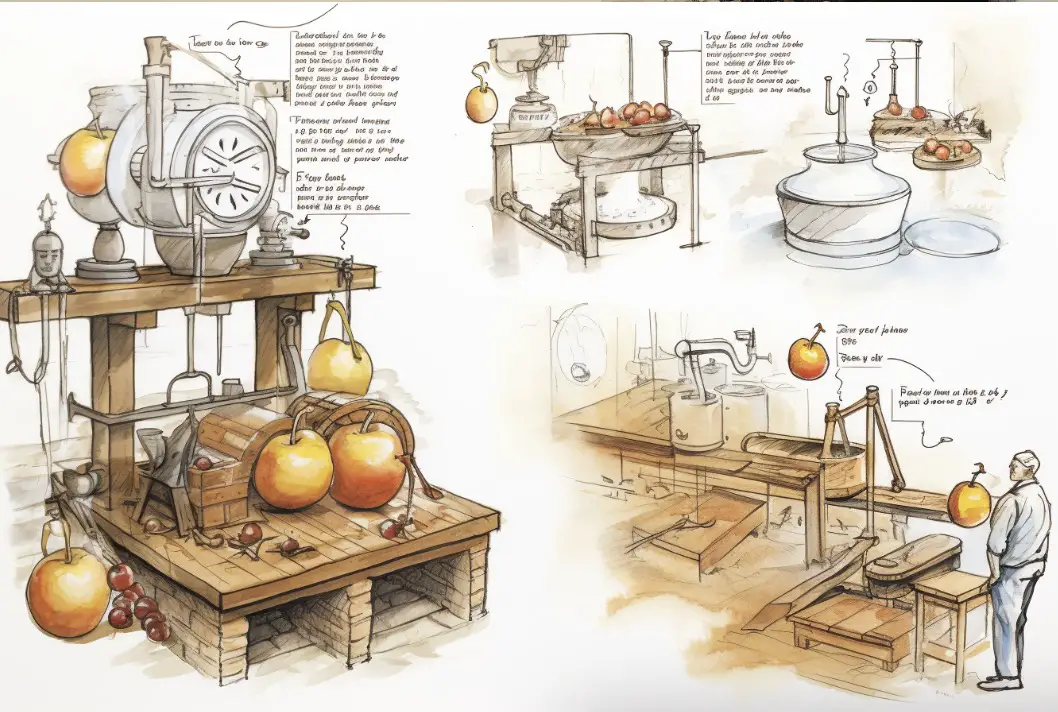As a professional brewer, I’ve been fortunate enough to experience firsthand the intricate dance between traditional and modern cider-making techniques.
Throughout this journey, I’ve come to appreciate the rich tapestry of history that envelops this craft. With that being said, how exactly do ancient methods of cider production contrast with today’s techniques?
The primary distinction between traditional and modern cider-making lies in the tools, techniques, and philosophies employed in the production process.
Traditional methods lean heavily on time-honored practices and artisanal touch, while modern techniques harness the power of science and technology to optimize efficiency and consistency.
Traditional Cider Making Techniques
1. Harvesting and Milling:
In the olden days, apples were primarily hand-picked, ensuring only the best fruit was chosen for cider production. After collecting, apples were milled using large stone wheels or even by hand using wooden mallets. As you might imagine, this process was labor-intensive but imbued the cider with a unique character.

2. Pressing:
The milled apples would be wrapped in straw or haircloths, stacked, and then pressed using a manual screw press. This slow pressing allowed for a more natural extraction of juice, which many believe imparts a richer flavor to the cider.
3. Fermentation:
Traditionally, fermentation was a spontaneous process. Ciders were left to ferment naturally with wild yeasts present on the apples and in the environment. This method resulted in diverse flavor profiles, but also came with the risk of inconsistent or unfavorable outcomes.
Modern Cider Making Techniques
1. Harvesting and Milling:
With the advent of technology, harvesting has become mechanized. Modern machinery can pick apples faster and in larger quantities. Milling too has evolved; electric mills provide a more consistent and efficient milling process.
2. Pressing:
Today’s hydraulic and pneumatic presses have replaced manual screw presses. They are more efficient, extracting more juice in less time, but some argue they might not capture the same depth of flavors as the traditional methods.

3. Fermentation:
In modern cider-making, fermentation is more controlled. Brewers have the luxury of selecting specific yeast strains to influence flavor and fermentation speed. This results in a more consistent product, but sometimes at the cost of the unique characteristics that wild yeasts bring.

4. Filtration and Pasteurization:
These are distinctly modern practices. Filtration clarifies the cider, and pasteurization ensures any harmful bacteria or yeast is eliminated. While these steps enhance the shelf life and safety of ciders, purists often believe they might strip away some of the drink’s natural essence.
How I Brew My Cider
Throughout my brewing career, I’ve dabbled with both traditional and modern cider-making techniques. I remember the sheer thrill of using a manual screw press for the first time, feeling the weight of history in my hands.
Conversely, utilizing modern equipment gave me an appreciation for the advancements we’ve made in the name of efficiency and consistency. Ultimately, it’s the balance between tradition and innovation that makes cider-making such a rewarding journey.
Conclusion
The world of cider-making is a blend of tradition and modernity. While traditional techniques offer a touch of nostalgia and artisanal charm, modern methods promise efficiency and predictability.
Both have their merits and pitfalls. As a brewer, I respect both approaches and believe that the most captivating ciders often arise from a harmonious blend of the old and the new.
Here are 10 quick facts about cider-making:
- Cider apples are distinct from table apples, having higher tannin and acid content.
- Wild yeast fermentation can produce unpredictable but unique flavor profiles.
- Modern cider-making often includes adding sugar or juice concentrates to adjust flavor.
- Traditional ciders usually have a more complex and variable taste due to natural processes.
- Many modern ciders undergo carbonation to produce a fizzy drink.
- Aging is crucial in both traditional and modern cider-making to develop flavors.
- Traditional cider-making often relies on seasonal and local apple varieties.
- Modern techniques use refractometers and hydrometers to measure sugar content and fermentation progress.
- Some modern ciders are back-sweetened to cater to a broader audience.
- Both traditional and modern ciders can benefit from blending different apple varieties.
Cider-making, whether approached traditionally or with a modern twist, is an art. Each brewer, including myself, brings their touch to the process, making each cider a unique expression of nature and craftsmanship.
FAQs
1. What are the main types of cider apples used in production?
There are primarily four types of cider apples: Bittersweet, Bittersharp, Sweet, and Sharp. Each type brings its unique flavor profile and characteristics to the cider. For example, bittersweet apples are low in acid but high in tannin, lending a robust and complex flavor to the cider.
2. How long does it typically take for cider to ferment?
The fermentation period for cider can vary significantly based on several factors. Typically, primary fermentation can take anywhere from 3 days to several weeks. However, for ciders that undergo secondary fermentation or aging, the process can extend up to several months or even years!
3. Do traditional ciders have a higher alcohol content than modern ciders?
Not necessarily. The alcohol content in cider is influenced by the amount of sugar in the apple juice, which is converted into alcohol by yeast. Both traditional and modern ciders can range from about 4% to 8% alcohol by volume (ABV). However, specific practices or additives in modern cider-making can be used to adjust the alcohol content more precisely.
4. Is cider gluten-free?
Yes, cider is naturally gluten-free as it’s made from apples. However, if you’re extremely sensitive to gluten, it’s crucial to ensure that the cider hasn’t been cross-contaminated or that no gluten-containing additives have been used.
5. Can I make cider at home using modern techniques?
Absolutely! While large-scale production might leverage sophisticated machinery, many modern techniques can be adapted for homebrewing. Homebrewing kits and specific yeast strains are available for those looking to experiment and craft their ciders at home. Just remember always to ensure cleanliness and sterilization to prevent unwanted microbial activity!




